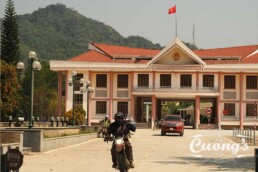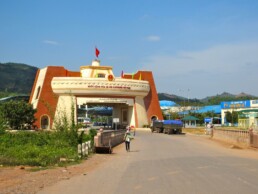
Vietnam is a country with a rich history and diverse culture, located in Southeast Asia. It shares its borders with China, Laos, and Cambodia, making it an important hub for international trade and travel. In order to facilitate these activities, Vietnam has established international border gates across the country. This article will provide an overview of Vietnam’s international border gates, highlight some key gates, explain the customs and immigration procedures, and offer tips for travelers crossing these border gates.
Overview of Vietnam’s International Border Gates
Vietnam has a total of 34 international border gates, which are scattered across the country’s borders with China, Laos, and Cambodia. These border gates serve as entry and exit points for both goods and people. Some of the most important border gates include Lao Cai in the north, Huu Nghi in the northeast, and Moc Bai in the south. Each border gate has its own characteristics and importance, depending on its location and proximity to major cities or economic zones.

Key International Border Gates in Vietnam
Lao Cai is a crucial border gate in northern Vietnam. It connects Vietnam with China’s Yunnan province and is an important gateway for trade and tourism between the two countries. Another significant border gate is Huu Nghi, located in the northeast region. It links Vietnam with China’s Guangxi province and serves as an important trade route. In the south, Moc Bai is a vital border gate that connects Vietnam with Cambodia’s Bavet. It is a bustling hub for trade, transportation, and tourism activities between the two neighboring countries.
Customs and Immigration Procedures at Vietnam’s Border Gates
When crossing Vietnam’s international border gates, travelers are required to go through customs and immigration procedures. This includes presenting valid travel documents such as passports, visas, and health certificates. Travelers may also need to declare any goods they are carrying, especially if they exceed the duty-free allowance. Customs officers may conduct random checks or carry out thorough inspections. It is important for travelers to familiarize themselves with the rules and regulations of the specific border gate they are crossing to ensure a smooth and hassle-free process.

Tips for Travelers Crossing Vietnam’s International Border Gates
For a seamless border crossing experience, it is advisable for travelers to arrive early and allow ample time for the customs and immigration procedures. It is also recommended to have all necessary documents ready and organized for easy presentation. Being aware of the duty-free limits and regulations can help avoid any unnecessary delays or fines. Additionally, it is important to be respectful and cooperative with customs and immigration officers, as they play a crucial role in maintaining border security and facilitating safe travel.
Vietnam’s international border gates are important gateways that connect the country with its neighbors, facilitating trade, tourism, and overall economic growth. Understanding the procedures and following the tips mentioned in this article can help travelers have a smooth and efficient border crossing experience. Whether it is for business or leisure, crossing Vietnam’s international border gates can be an exciting and memorable part of any journey.
